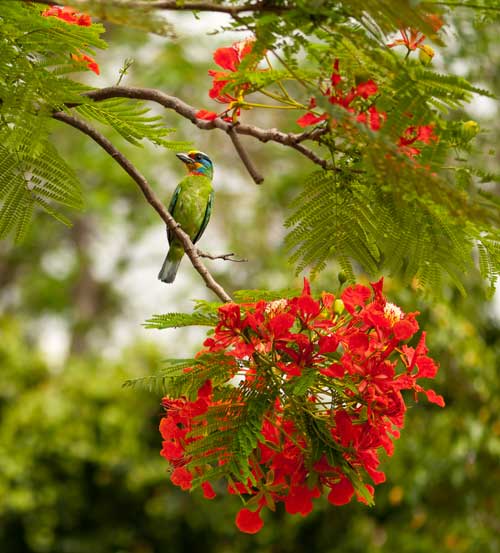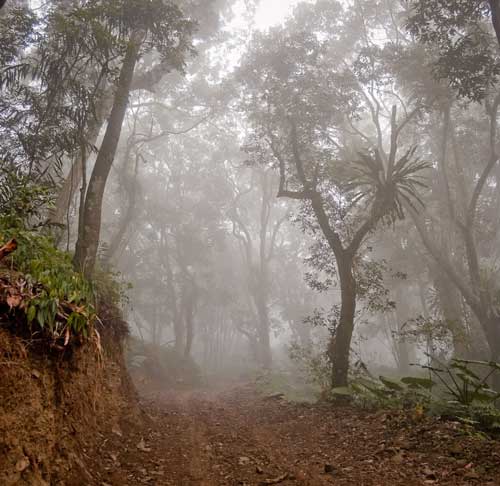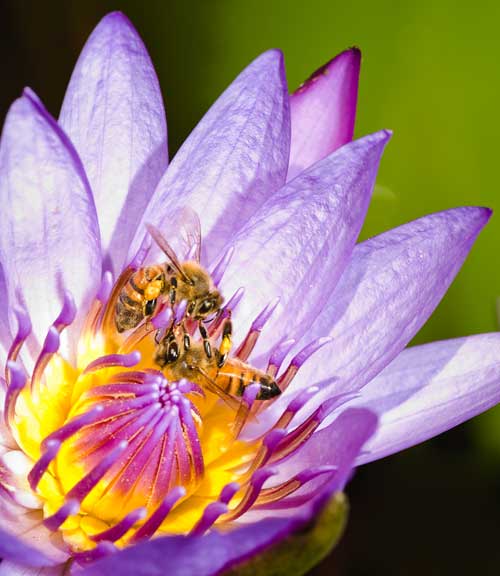Nature & Ecology of Taiwan
Despite a human population that has grown tenfold in the past 200 years and a massive expansion of industry and agriculture, Taiwan remains a realm of striking highlands and dense forests. More than 58 percent of Taiwan is covered by some type of woodland or bamboo. As a percentage of its total land area, Taiwan has twice as much forest as Norway and almost five times more than Great Britain.
For long periods in its past, Taiwan was physically connected to the Chinese mainland. During the most recent Ice Age, humans and animals migrated across the land bridge to what’s now Taiwan. Fossil evidence shows that among these arrivals were deer, rhinos, horses, and hyenas. Between 10,000 and 12,000 years ago, the sea level began to rise. Local rhino and horse populations went extinct, and it’s unclear if Taiwan has a true native dog species. Because Taiwan was once again an island, its fauna and flora evolved in isolation, resulting in a fabulous amount of biodiversity. Of the 4,300-plus vascular plant species, more than 1,000 are found nowhere else on Earth. Some 55 of the 85 terrestrial mammals are endemic (meaning they exist only in Taiwan). One third of the reptile species and subspecies are unique, as well 11 of its 35 different bats, 34 of the 56 kinds of stag-beetle, and 42 of the 265 freshwater fishes. Of course, several of these very special creatures are endangered as a result of habitat loss.
For visitors with a serious interest in nature, Life in Taiwan can arrange expert guides specialised in birdwatching and other types of ecotourism.
Forests
The vast stands of camphor early settlers discovered and exploited are a thing of the past, replaced by tracts of Japanese cedars and other non-native species. Nonetheless, these forests play a vital ecological role. Not only do they nurture the majority of the island’s bird species and almost all its larger wild creatures, they also prevent flooding by absorbing rainfall.
Logging is now restricted to small commercial plots, and these days the government’s Forestry Bureau concentrates on managing its 18 national forest recreation areas (among them Alishan, Zhiben, and Fuyuan) while supervising reforestation efforts. In the past decade, about six million new trees have been planted per year, not counting the many thousands local governments have added to city streets and parks.
Taiwan’s birds and animals

The largest of Taiwan’s 53 Important Bird Areas (IBAs), Nengdan in Nantou County, covers almost 4 percent of the main island; Yushan and Shei-Pa national parks in their entireties have been declared IBAs, as has Guandu Nature Park in Taipei. Other IBAs of special interest to twitchers include Mount Bagua, Taijiang National Park and Orchid Island.
Larger creatures aren’t difficult to spot in Taiwan’s foothills and mountains. The island’s only native primate, the Formosan macaque, hangs out in easy-to-access parts of Yushan National Park and even on Mount Longevity, not far from the centre of Kaohsiung.
Deer of various kinds roam the mountains. The largest are sambars; sika deer can be sighted in certain parts of Kenting National Park, while Reeves’s muntjacs (often called ‘barking deer’ because their yap is like a dog’s) exist in substantial numbers in the wild. Once widely hunted, they’re now farmed for their meat.
The country’s only ursine species, the Formosan Black Bear, is far harder to find. The estimated 500 bears which remain in the wild live deep in the mountains, several days’ hike from the lowlands. To see small yet intriguing creatures like flying squirrels and pangolins, you needn’t venture so far from civilisation.
 Butterflies and other insects
Butterflies and other insects
Butterflies are Taiwan’s most eye-catching insects. Of the approximately 500 species, 56 are unique to the island. Yangmingshan near Taipei is an especially good place to spot lepidopterans. Islandwide, moth species vastly outnumber types of butterfly types.
Thanks to an abundance of wildflowers, large numbers of butterflies can be found year-round in the southern half of the island. Meinong and Maolin (both of which are in Greater Kaohsiung) are famous for valleys which, at certain times each year, are filled with these beautiful creatures. Yet even in the north in the cooler months, you’ve a good chance of spotting unusual species.
Taiwan’s other insectoid natural wonders include an amazing range of beetles, dragonflies, and grasshoppers. There are also well over 300 spider species, including several which have yet to be properly named and described.


 Butterflies and other insects
Butterflies and other insects